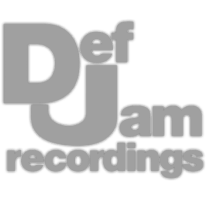Professional Analog Mastering.
Professional Analog Mastering.










For these first 2 chapters, let’s talk about some optional settings you can use at the start of your vocal chain.
The Gullfoss EQ is a really useful tool that amplifies and attenuates aspects of the incoming signal depending on that signal’s frequency response. Its goal is to reduce masking and unpleasant frequencies with the Recover and Tame functions respectively - which for vocals will boost be useful for balancing the recording.
I’ll set both to a moderate level, which I find is a great foundation for my vocal processing. Let’s listen to how this makes the vocal more balanced.
The tame function of the Gullfoss EQ should've reduced some of the unpleasant aspects of the recording, but Soothe 2 is great for reducing small problem frequencies. I typically focus this effect on the mids and high mids, only use a small amount, and enable its linear phase mode.
This will mainly attenuate resonances, many of which you don’t know is a problem until you hear how smooth the vocal sounds without them.
Let’s listen and notice how the vocal has a much more pleasant sound.
Next, let’s focus on some more typical forms of processing.
With a subtractive EQ, I’m going to attenuate any aspects of the vocal that I don’t want - if you start with this step instead of using the processing from chapters 1 and 2, you’ll likely have a fair amount you want to reduce. I’ll start with a high-pass.
Then I’ll reduce around 1kHz to attenuate some of the vocal’s more nasally tones. You might also want to attenuate some of the sibilance. Let’s listen and notice how the vocal sounds more balanced.
Next, I want to focus on sibilance to make the vocal sound more balanced in the high frequencies, especially before I begin to amplify the overall signal. You have a few options for this - you can use a typically de-esser, or use a multi-band compressor or dynamic EQ.
I’ll stick with a de-esser, and insert the Weiss de-esser, since it’s a very transparent sounding option.
Let’s take a listen to how the vocal sounds with less sibilance.
Next, I’m going to combine 2 forms of processing - first I’ll amplify the vocal’s fundamental, and it’s overtone around 2kHz with an EQ. Then I’ll saturate the vocal to introduce harmonic distortion that’ll make the fundamental easier to hear, as well as make the vocal sound full.
I used the additive EQ first so that I could drive specific frequencies into the saturator, which then works harder on them. As a result, the saturator will cause more harmonics that relate to the fundamental, and potentially, the overtone around 2kHz.
Let’s take a listen to both of these forms of processing.
If your saturator offers modulation, you can use it to increase the aggressiveness of the vocal’s transients, which is great for rap and pop. I’ll use an envelope follower, and reduce its timing to be as quick as possible before attaching it to the drive function of my saturator.
As a result, the transient will be distorted, making it a lot more prevalent, and easier to perceive.
Let’s listen and notice how the vocal becomes more intelligible.
Next, I want to increase the perceived loudness of the vocal, but I don’t want to use downward compression to accomplish this. I’ll use either the MV2 to upward compress or the Oxford inflator to increase the perceived loudness, both of which increase detail without attenuating peaks.
I prefer the inflator, which I’ll mix in with the effect slider.
Let’s listen to how the vocal becomes fuller and louder.
Next, I’m going to set up 2 busses, on one I’ll insert a delay and on the other a reverb, both of which I’ll time to the BPM using the formula 60000/BPM. For both the reverb and delay, I’ll make them short so that they thicken the vocal.
For the reverb, I’ll increase the pre-delay to over 30ms to keep the transient from being reverberated. Since the timing of both of these processors is so short, the listener will perceive the reflections as being one sound source - resulting in a powerful sounding vocal.
Let’s listen to how these 2 thicken the vocal.
If the genre calls for it, you may want the vocal to take on its own identity or to have a more stylized sound. You can create a longer reverb and match it to the BPM, but this time, make it a half, whole note, or longer.
Again, you can increase the pre-delay to retain vocal intelligibility, but if you want a more washed-out sound, you can reduce this.
Let’s listen to this vocal with a stylized reverb.
Last, in the chain, we can use an EQ similar to one that we’d use when mastering - that is, one that’s very subtle and with gradual, natural-sounding curves. I find I usually only need 3 bands, and only about a dB of change for each.
Typically, affecting the lows, mids, and highs works well. Also, keep in mind that this EQ is going to affect all processing before it, except our reverb and delay since we used sends for these.
Let’s listen to how this gentle shaping gives us some needed control at the end of the chain.
This could be considered an optional step as well, but I find it’s almost always needed to create a truly unique and professional-sounding vocal. In short, I’ll find aspects of the vocal that I want to increase in particular sections and then automate functions of the plugins to make this happen.
For example, I could increase the effect slider for the inflator I used. Or, maybe I could increase the reverb send to emphasize the reverb at certain points of the song.
Let’s listen to it and consider how it can be used creatively.